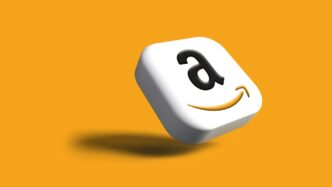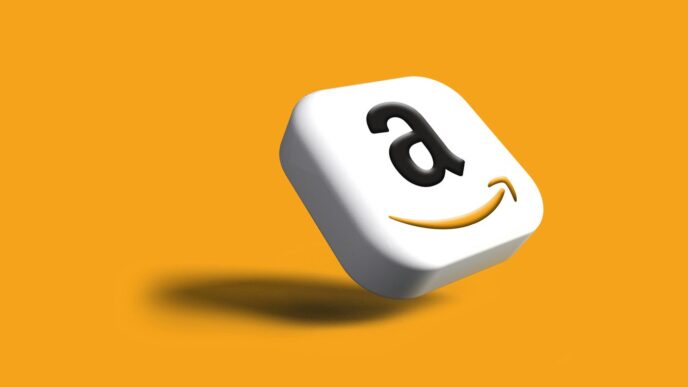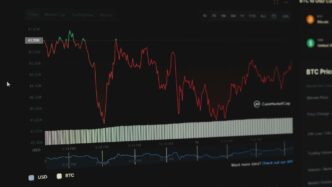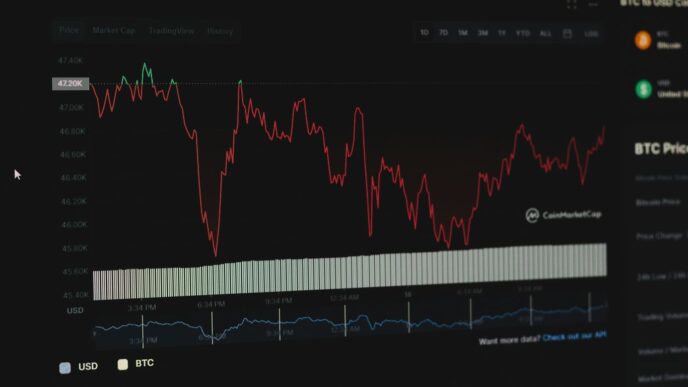Understanding The SaaS Development Landscape
Defining Software As A Service
So, what exactly is Software as a Service, or SaaS? Think of it like renting software instead of buying it outright. Instead of installing a program on your computer and owning it forever, you access it over the internet, usually through a web browser. The company providing the software handles all the technical stuff – the servers, the updates, the security – and you just pay a subscription fee, often monthly or yearly. It’s a big shift from how software used to be sold, where you’d buy a disc, install it, and that was that.
This model separates the ownership of the software from its use. The provider manages everything behind the scenes, and you get to use the application without worrying about the underlying infrastructure. It’s a bit like how streaming services work for movies and music; you don’t own the content, but you can watch or listen to it whenever you want for a fee.
The Evolution Of SaaS
SaaS isn’t exactly a brand-new idea, but it’s really taken off in the last decade or so. Back in the day, software was typically a one-time purchase, installed on individual computers. This meant high upfront costs, long development cycles, and a lot of hassle with updates and maintenance for both the user and the developer. Then came the cloud, and everything changed.
John Koenig actually coined the term "SaaS" back in 2005, and since then, the industry has just exploded. The market was valued at over $150 billion in 2021 and is expected to keep growing. This growth is driven by a few key things:
- Predictability: Businesses like knowing their software costs upfront.
- Flexibility: Users can access software from anywhere with an internet connection.
- Accessibility: No need for complex installations on every device.
This shift to cloud-based, subscription models has made software more accessible and adaptable for businesses of all sizes.
Key Advantages Of The SaaS Model
Why has SaaS become so popular? Well, there are some pretty solid reasons. For businesses, it often means lower upfront costs compared to buying traditional software licenses. You pay as you go, which makes budgeting easier. Plus, the provider takes care of all the maintenance, updates, and security patches, freeing up your IT team to focus on other things. This means you always have the latest version of the software without any extra effort on your part.
From a user’s perspective, the convenience is a big draw. You can log in from any device with an internet connection and pick up right where you left off. This flexibility is a game-changer for remote work and teams spread across different locations. It also means that the software is constantly being improved and updated, so it stays relevant and secure. The subscription model also allows for more personalized experiences, as the software can adapt to individual user preferences and usage patterns over time.
Strategic Planning For SaaS Development
Before you even think about writing a single line of code, you need a solid plan. This isn’t just about having a cool idea; it’s about making sure that idea can actually turn into a business that people will pay for. Think of it like building a house – you wouldn’t just start hammering nails without blueprints, right? The same goes for SaaS.
The Discovery Phase: Market Research And Goal Setting
This is where you figure out if your idea is even worth pursuing. You need to look around and see what’s already out there. Are other companies doing something similar? If so, how are they doing it, and what are they missing? Understanding your potential customers and their problems is the absolute first step. You’re not just building software; you’re solving a problem for someone. So, what exactly is that problem, and how big is it? You also need to set some clear goals. What do you want this SaaS product to achieve in the next year? Five years? These goals will guide all your decisions down the road.
Defining Your Target Audience And User Needs
Who are you actually building this for? You can’t build something for everyone, so you need to get specific. Are you targeting small businesses, individual freelancers, or large corporations? Each group has different needs and budgets. Once you know who you’re talking to, you need to dig into what they really need. What are their biggest headaches with current solutions? What features would make their lives significantly easier? Talking to potential users, sending out surveys, and observing how people work can give you a ton of insight here. It’s about getting into their shoes.
Establishing A Robust Business Model
Okay, so you have an idea, you know who it’s for, and you know what they need. Now, how do you make money from it? This is where your business model comes in. You need to decide how you’ll charge customers. Will it be a monthly subscription? A yearly fee? Maybe different tiers based on features or usage? You also need to think about how you’ll get the word out – marketing and sales strategies. And don’t forget about customer support. How will you help people when they run into issues? Planning all this out now saves a lot of headaches later. It’s about making sure your great idea can actually support itself and grow.
Architecting Scalable SaaS Solutions
Building a SaaS product that can grow with your user base and handle increasing demand is a big deal. It’s not just about writing code; it’s about setting up a solid foundation that won’t crumble when things get busy. Think of it like building a house – you need strong walls and a good roof before you start decorating.
Choosing The Right Cloud Infrastructure Provider
Your cloud provider is basically the landlord for your digital building. You want someone reliable, flexible, and who won’t charge you an arm and a leg. Big names like Amazon Web Services (AWS), Google Cloud, and Microsoft Azure are popular for a reason. They offer a ton of services, can scale up or down easily, and have pretty good security. It’s worth looking at what each one offers to see what fits your budget and technical needs best. AWS, for instance, is often a go-to because of its wide range of tools and how you can pay for what you use.
Designing A Resilient Software Architecture
This is where you map out how all the pieces of your software will fit together. A good architecture means your application can keep running even if one part has a hiccup. It’s about making sure it’s stable and can handle unexpected loads. This often means using cloud-native designs that are built for the internet from the start. The goal is to create something that’s not just functional today but can adapt to future changes without a complete overhaul.
Leveraging Microservices For Flexibility
Instead of building one giant, complicated piece of software (a monolith), microservices break your application down into smaller, independent services. Each service does one thing well. This makes it much easier to update or replace parts of your system without affecting everything else. If one microservice needs an update, you can work on just that one. This approach really helps with speed and makes your whole system more adaptable. It’s like having a team of specialists rather than one generalist trying to do everything.
Crafting Exceptional User Experiences
<img src="https://contenu.nyc3.cdn.digitaloceanspaces.com/journalist/48045731-b2c6-4c25-b121-c078cebc6db9/thumbnail.jpeg" alt="white and black we do it with printed shirt” >
Think about the last time you used an app or website that just felt right. Everything clicked, you found what you needed without thinking, and you probably left feeling pretty good about it. That’s the magic of a well-designed user experience (UX). In the SaaS world, this isn’t just a nice-to-have; it’s a make-or-break factor for keeping users engaged and happy.
Prioritizing Intuitive User Interface Design
When we talk about user interface (UI) design, we’re really talking about how your software looks and how users interact with it. It’s the buttons, the menus, the layout – all of it. The goal here is simplicity. Users shouldn’t need a manual to figure out how to use your product. Think about it like this:
- Clarity over complexity: Can a new user understand what to do within seconds?
- Consistency is key: Buttons that look the same should act the same. Navigation should be predictable.
- Visual hierarchy matters: Important information should stand out. Users should be guided naturally through tasks.
A clean, straightforward interface makes users feel competent and in control. It reduces frustration and makes them more likely to stick around.
Ensuring Seamless User Experience Across Devices
People use software on all sorts of devices these days – desktops, laptops, tablets, phones. Your SaaS needs to work well on all of them. This is often called responsive design. It means the layout and functionality adjust automatically to fit the screen size.
- Mobile-first thinking: Often, designing for the smallest screen first helps you focus on what’s truly important.
- Touch-friendly elements: Buttons and links need to be large enough to tap easily on a touchscreen.
- Performance matters: Pages need to load quickly, especially on mobile connections.
If your app is clunky or hard to use on a phone, many users will just give up. They expect a smooth experience, no matter their device.
Implementing User-Centric Personalization
People like feeling like things are made just for them. Personalization in SaaS means tailoring the experience to individual users based on their behavior, preferences, and past interactions. This can make your product feel much more relevant and helpful.
- Smart recommendations: Suggesting content or features a user might like based on what they’ve done before.
- Customizable dashboards: Letting users arrange their workspace to show what matters most to them.
- Personalized communication: Sending targeted emails or notifications based on user activity.
When done right, personalization can make users feel understood and valued, leading to greater loyalty and satisfaction. It’s about making your software feel less like a generic tool and more like a personal assistant.
The Development And Testing Lifecycle
Alright, so you’ve got your plan, your architecture is solid, and you’re ready to actually build this thing. This is where the rubber meets the road, so to speak. It’s a two-part dance: building the software and then making sure it actually works like it’s supposed to. Getting this part right is super important for keeping your users happy and your business running smoothly.
Selecting The Optimal Technology Stack
First off, you gotta pick your tools. This isn’t just about picking the trendiest programming language; it’s about choosing what fits your project best. Think about what your team knows, what kind of performance you need, and how easy it will be to scale later on. You’ll be looking at things like:
- Programming Languages: Python, JavaScript, Ruby, Go – each has its strengths.
- Frameworks: React, Angular, Vue for the front end; Node.js, Django, Rails for the back end.
- Databases: PostgreSQL, MySQL, MongoDB, depending on your data structure needs.
- Cloud Services: AWS, Azure, Google Cloud – you’ll need these for hosting and all the backend magic.
Choosing the right stack is like picking the right ingredients for a recipe; get it wrong, and the whole dish can be off.
Iterative Development With Agile Methodologies
Nobody builds a perfect product on the first try, and that’s okay. Agile is the way to go here. It’s all about breaking down the big project into smaller chunks, building them, getting feedback, and then doing it all over again. This means you’re not stuck in a room for months building something nobody wants.
Here’s a simplified look at how it often plays out:
- Planning: Figure out what small piece you’re going to build next.
- Development: Actually write the code for that piece.
- Testing: Make sure that piece works correctly.
- Review: Show it to stakeholders or even some early users.
- Deployment: Release that small piece to your users.
This cycle repeats, allowing you to adapt as you learn what users actually need and how they use your product. It’s way better than the old waterfall method where you just hoped for the best at the end.
Comprehensive Quality Assurance And Testing
So, you’ve built something, and you’ve done it in small steps. Now, you gotta make sure it’s not full of bugs. Quality Assurance (QA) is your best friend here. It’s not just about finding errors; it’s about making sure the whole experience is smooth and reliable for your users.
This involves a few key areas:
- Unit Testing: Checking individual pieces of code.
- Integration Testing: Making sure different parts of your software talk to each other properly.
- End-to-End Testing: Simulating a real user’s journey through the entire application.
- Performance Testing: Seeing how your app holds up under heavy load.
- Security Testing: Trying to break into your own system before someone else does.
Think of it like this: you wouldn’t sell a car without checking the brakes, right? Testing is your way of checking all the critical systems before you hand the keys over to your customers. It takes time, but it saves a lot of headaches down the line.
Ensuring Security And Compliance In SaaS

When you’re building a SaaS product, security and compliance aren’t just afterthoughts; they need to be baked in from the start. Think of it like building a house – you wouldn’t put up the walls before you’ve got a solid foundation, right? The same goes for your software. Users are trusting you with their data, and if that trust is broken, your business can take a serious hit.
Implementing Robust Security Measures
So, what does "robust security" actually mean in practice? It’s a multi-layered approach. You’ve got to protect your infrastructure, your application code, and the data itself. This means things like:
- Access Control: Not everyone needs access to everything. Implement strict role-based access controls so users and employees only see what they’re supposed to. Multi-factor authentication (MFA) is pretty much a must-have these days.
- Data Encryption: Your data needs to be protected both when it’s moving (in transit) and when it’s sitting still (at rest). Use strong encryption algorithms to keep sensitive information unreadable to unauthorized eyes.
- Regular Audits and Monitoring: Keep an eye on what’s happening. Regular security audits can help you spot vulnerabilities before attackers do. Real-time monitoring can alert you to suspicious activity.
- Secure Coding Practices: Train your developers on secure coding. Things like input validation and avoiding common vulnerabilities (like SQL injection) are super important.
Adhering To Industry Compliance Standards
Depending on your industry and where your customers are located, you’ll likely need to meet specific compliance standards. This isn’t just about avoiding fines; it’s about building credibility. Some common ones include:
- GDPR (General Data Protection Regulation): If you handle data for EU residents, this is a big one. It’s all about data privacy and user rights.
- HIPAA (Health Insurance Portability and Accountability Act): If your SaaS deals with protected health information (PHI) in the US, you’ll need to be HIPAA compliant.
- PCI DSS (Payment Card Industry Data Security Standard): If you process credit card payments, this is non-negotiable.
It’s a good idea to get a handle on which regulations apply to your specific business early on. Sometimes, your cloud provider can help with certain aspects of compliance, but the ultimate responsibility often lies with you.
Protecting User Data With Encryption
Encryption is a cornerstone of data protection. When we talk about protecting user data, encryption is your best friend. It scrambles your data so that only authorized parties can read it. Think of it like a secret code that only you and the intended recipient have the key to.
Here’s a quick look at how it plays out:
| Type of Data | Protection Method |
|---|---|
| Data in Transit | TLS/SSL Certificates |
| Data at Rest | AES-256 Encryption |
| Sensitive Fields | Field-level Encryption |
Making sure your data is encrypted properly builds a lot of confidence with your users. They want to know their information is safe, and strong encryption is a clear signal that you take their privacy seriously. It’s a big part of why people will stick with your service long-term.
Launching And Maintaining Your SaaS Product
So, you’ve built your SaaS product. That’s a huge step, but honestly, it’s just the beginning. Getting it out there and keeping it running smoothly is where the real work starts. Think of it like opening a new restaurant; you can have the best recipes, but if the service is bad or the doors are always closed, nobody’s coming back.
Developing a Minimum Viable Product (MVP)
Before you go all-in with every single feature you’ve dreamed up, it’s smart to start with an MVP. This is basically your product with just enough features to be usable by early customers who can then give you feedback. It’s a way to test the waters without spending a fortune. You want to get something out there, see how people react, and then build on that. The goal of an MVP is to learn, not to be perfect.
Here’s a quick look at why an MVP is a good idea:
- Market Validation: Does anyone actually want what you’re building?
- Reduced Development Costs: You’re not building everything at once.
- Faster Time to Market: Get something in front of users sooner.
- Gathering Real Feedback: Learn what users like and dislike from actual usage.
Strategies For Post-Launch Maintenance
Once your MVP is out there, or even your full product, the maintenance phase kicks in. This isn’t just about fixing bugs that pop up, though that’s a big part of it. It’s about keeping the whole system running efficiently and reliably.
- Bug Fixing: Address issues reported by users or found through monitoring. Prioritize based on impact.
- Performance Monitoring: Keep an eye on how fast your application is running and how much resources it’s using. Slowdowns can drive users away.
- Security Updates: Regularly patch any vulnerabilities to keep your system and user data safe.
- Infrastructure Management: Make sure your cloud servers and other backend systems are running smoothly and are scaled appropriately.
Continuous Improvement Based On User Feedback
This is where you really start to build loyalty. Your users are the ones using your product every day, so they know what works and what doesn’t better than anyone. You need to have systems in place to collect this feedback and actually act on it.
- Feedback Channels: Set up ways for users to easily report bugs, suggest features, or just share their thoughts. This could be in-app forms, email, or dedicated forums.
- Analyze Feedback: Don’t just collect it; look for patterns. Are multiple users asking for the same thing? Are there common complaints?
- Iterate and Update: Use the feedback to plan your next set of features or improvements. Release updates regularly to show users you’re listening and improving the product.
Wrapping It Up
So, we’ve covered a lot of ground on building SaaS products for 2025. It’s not just about having a good idea anymore; it’s about making sure that idea works well for people, stays secure, and can grow as your user base does. Remember, the tech landscape changes fast, so keeping an eye on what users need and what’s new in technology is key. Building a successful SaaS app takes effort, but by focusing on the user and building a solid foundation, you’re setting yourself up for a good chance at success. Don’t be afraid to get started, and keep learning as you go.














